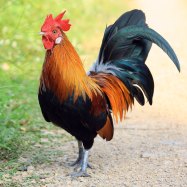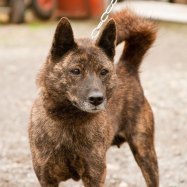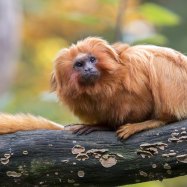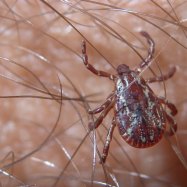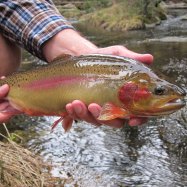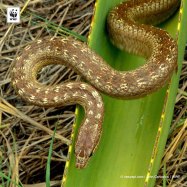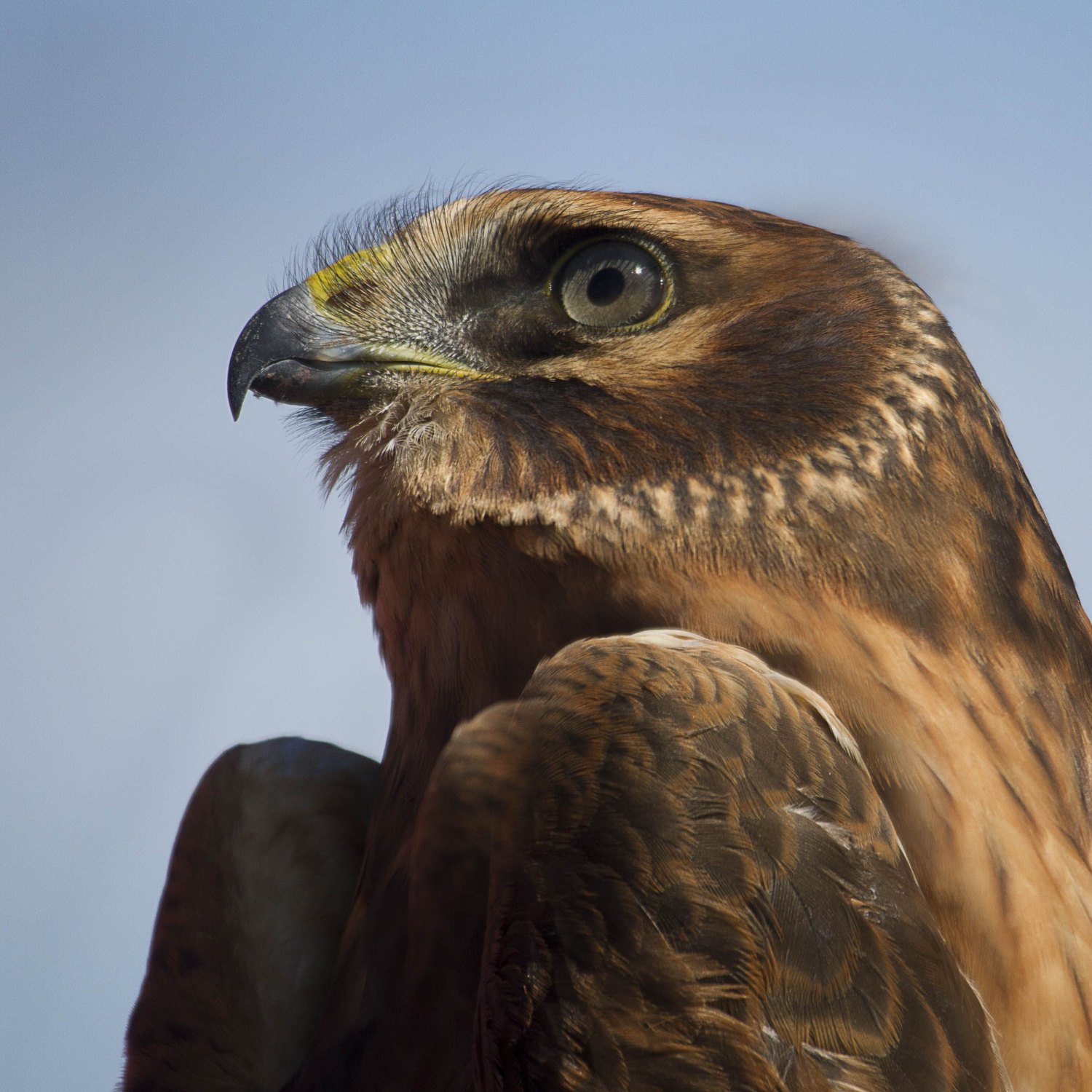
Harrier
48-56 cm
The Harrier is a majestic bird of prey found in open areas near water. With a slender body, long tail, and broad wings, it belongs to the Accipitridae family. Spanning 48-56 cm in length, it's a fierce hunter and considered one of the most agile birds in its category. Keep an eye out for this magnificent bird on your next outdoor adventure! #Harrier #birdofprey #predator #naturelovers
Animal Details Summary:
Common Name: Harrier
Kingdom: Animalia
Habitat: Wetlands, marshes, meadows
The Graceful Harrier: A Bird of Prey in Wetlands and Marshes
The Harrier, with its scientific name Circus aeruginosus, is a majestic bird of prey that roams over wetlands, marshes, and meadows. Classified as a member of the animal kingdom, phylum Chordata, class Aves, order Accipitriformes, and family Accipitridae, the Harrier is a unique bird that boasts exceptional features and characteristics.Found in various regions of the world, the Harrier has captured the attention of bird watchers, naturalists, and researchers due to its graceful flight and remarkable hunting techniques. In this article, we will delve deeper into the details of the Harrier, including its habitats, feeding methods, geographical distribution, and physical attributes Harrier.
A Place to Call Home: Habitat and Range
The Harrier is commonly found in wetlands, marshes, and meadows, making these places its preferred habitats. These birds prefer to inhabit open, flat terrain near large bodies of water, such as lakes, rivers, and streams. This is because these habitats provide them with a diverse food source, including small mammals, birds, and insects.Primarily found in Europe, Asia, and Africa, the Harrier's geographical distribution is quite vast compared to other bird species. These birds are known to breed in Eurasia during the summer and then migrate to Africa for the winter. In Europe, they are commonly seen in the United Kingdom, Germany, and France. In Asia, they are found in countries like Russia, China, and Japan, while in Africa, they can be spotted in Egypt, Sudan, and Ethiopia.
A Hunter's Diet: Feeding Methods of the Harrier
The Harrier is a carnivorous bird, which means it primarily feeds on other animals for sustenance. These birds are skilled hunters and use various techniques to catch their prey Horgi. One of the most remarkable hunting tactics of the Harrier is its hovering ability. This bird can hover in the air for several minutes, using its sharp eyesight to spot prey on the ground below.The Harrier's diet typically consists of small animals, including rodents, reptiles, insects, and sometimes, other birds. These birds are opportunistic hunters and will often take advantage of any available food source. While hovering, they will suddenly dive towards the ground to catch their prey with their sharp talons. The Harrier also has a keen sense of hearing, which helps in locating prey, making it a highly efficient hunter.
The Picture-Perfect Bird: Physical Characteristics
The Harrier has a unique and distinguishing physical appearance, making it easily recognizable in its habitat. These birds have a slender body, long tail, and broad wings that allow them to soar through the air with great agility. The male and female Harrier have a distinct difference in their color and physical features. The male Harrier has a greyish-white head and neck, while the female has a chocolate-brown head and neck.One of the unique features of the Harrier is its habitat. These birds are built for wetland areas, as their toes have a significant amount of bare skin that allows them to walk on floating vegetation without sinking. This feature also helps them to catch prey hidden in the water by sensing movements with their toes. The Harrier's coloring also serves as camouflage in its habitat, with a combination of brown, white, and black feathers that blend in with the vegetation.
The Harrier's Vital Statistics: Length and Weight
The Harrier is a medium-sized bird, with an average length of 48-56 cm and a wingspan of about 97-118 cm. These birds have a slender body, with males weighing around 373-585 grams, while females weigh slightly more at 475-800 grams. The Harrier's long tail and broad wings give them exceptional manoeuvrability in flight, making them efficient hunters.Due to their strong and powerful wings, the Harrier can fly low to the ground while hunting, which is a unique feature not often seen in other birds of prey. These birds also have a high-pitched call, which is used for both communication and during courtship. The Harrier's call is often described as a "kui-kui" sound, making it easily recognizable in its environment.
Conservation Concerns: Threats to the Harrier Population
The Harrier is currently listed as a species of least concern by the International Union for Conservation of Nature. However, the population of these birds is declining in some regions due to various threats. One of the significant threats to the Harrier is habitat loss, as wetland areas continue to shrink due to human activities such as land development and agricultural practices.Pesticide use is also a significant concern for the Harrier, as it affects the birds' prey and can lead to serious health issues for the birds themselves. Climate change is also a threat to the Harrier's population, as it affects their breeding and migration patterns. Conservation efforts are being made to protect and preserve the Harrier's habitats in various areas, such as the UK and Europe.
A Sight to Behold: Watching the Harrier in their Habitat
For nature and bird lovers, watching the Harrier in its natural habitat is truly a sight to behold. These birds are known for their graceful and majestic flight, and observing them hover over the wetlands and marshes is a truly remarkable experience. Thanks to conservation efforts, there are designated observation areas in various countries where visitors can witness these birds in action.The United Kingdom, known as one of the best places to spot the Harrier, has several locations where these birds can be seen, such as the Suffolk coast and the Isle of Islay in Scotland. In Africa, the Dasht-e-Margo Flights Conservation area in Ethiopia is a popular spot for Harriers during the winter months. In Russia, the Khakassia region is a prime location for spotting these birds during their migration.
In Conclusion
The Harrier, with its grace, agility, and unique physical features, is a truly remarkable bird of prey. Classified as a member of the animal kingdom, the Harrier's beauty and behavior have captured the attention of bird enthusiasts and scientists alike. With conservation efforts in place, we hope to continue seeing these birds soaring through the wetlands and marshes for generations to come. So, next time you find yourself near a body of water, keep an eye out for the graceful Harrier and marvel at its magnificent presence.

Harrier
Animal Details Harrier - Scientific Name: Circus aeruginosus
- Category: Animals H
- Scientific Name: Circus aeruginosus
- Common Name: Harrier
- Kingdom: Animalia
- Phylum: Chordata
- Class: Aves
- Order: Accipitriformes
- Family: Accipitridae
- Habitat: Wetlands, marshes, meadows
- Feeding Method: Carnivorous
- Geographical Distribution: Europe, Asia, Africa
- Country of Origin: Eurasia
- Location: Open areas near water
- Animal Coloration: Brown, white, black
- Body Shape: Slender body, long tail, broad wings
- Length: 48-56 cm
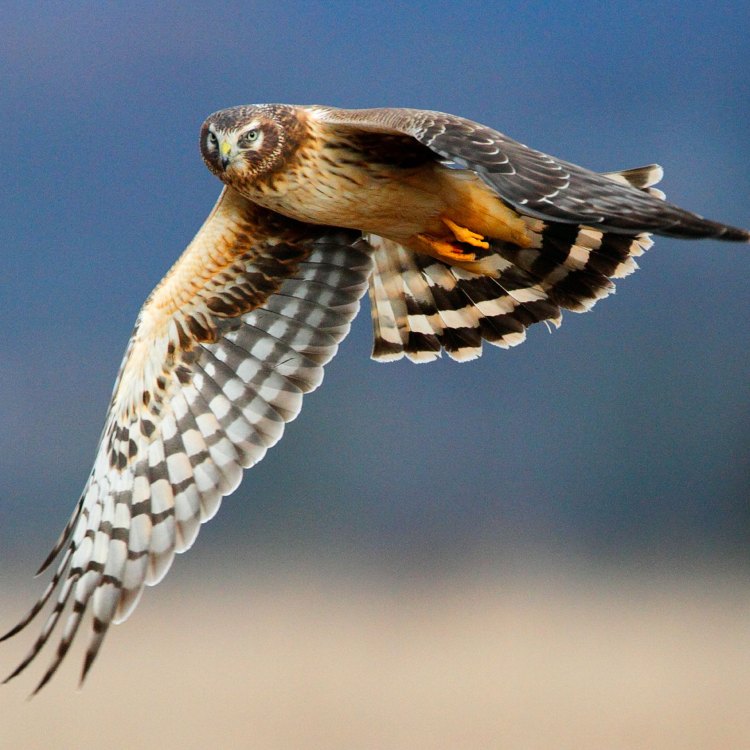
Harrier
- Adult Size: Medium
- Average Lifespan: 10-12 years
- Reproduction: Sexual
- Reproductive Behavior: Monogamous
- Sound or Call: High-pitched, whistling sound
- Migration Pattern: Migratory
- Social Groups: Solitary, nesting pairs
- Behavior: Diurnal, territorial
- Threats: Habitat loss, pollution, hunting
- Conservation Status: Least Concern
- Impact on Ecosystem: Controls rodent populations
- Human Use: Bird of prey conservation programs, falconry
- Distinctive Features: Females are larger than males, owl-like facial disc
- Interesting Facts: They fly low over the ground while hunting
- Predator: None, top predator
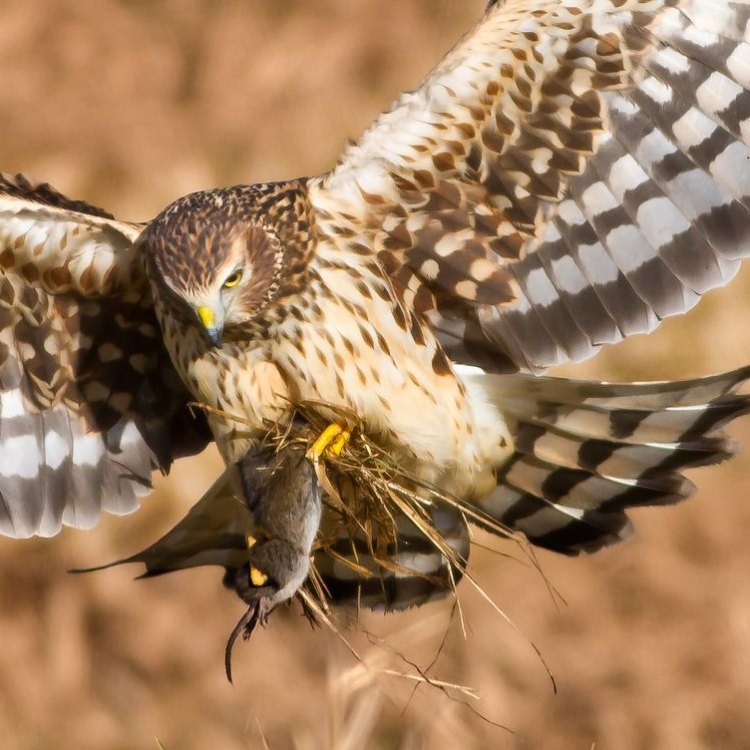
Circus aeruginosus
The Fascinating Harrier: A Medium-Sized Bird with Mighty Powers
The great wide skies of the world are filled with an array of wondrous birds, each with its own unique characteristics and abilities. Among these magnificent creatures is the Harrier, a medium-sized bird of prey known for its supreme hunting skills and distinctive features. These birds are not only a treat to watch but also play an essential role in the balance of our ecosystem. In this article, we will explore the remarkable features and fascinating behaviors of Harriers, and understand why they are truly a force to reckon with PeaceOfAnimals.Com.A Powerful Hunter with Impeccable Hunting Skills
The Harrier, also known as the Circus cyaneus, belongs to the family of Accipitridae, which includes hawks, eagles, and kites. These birds are widespread in North America, Eurasia, and some parts of Africa, making them one of the most cosmopolitan species of raptors.One of the main reasons for their extensive distribution is their phenomenal hunting abilities. Harriers are known for their unique hunting technique, called ‘quartering.’ This technique involves flying low over the ground in a back and forth pattern, scanning for prey. Once a target is spotted, the Harrier will dart towards it with precision and incredible speed, using its sharp talons to catch the prey and bring it down to the ground.
Interestingly, these birds prefer to hunt during the day, making them diurnal. This is not very common for birds of prey, as most prefer to hunt during the early morning or late evening hours. The Harrier's preference for daytime hunting is due to its unique physical features, such as its excellent eyesight and relatively light body, which allow it to hunt during the day without losing energy Hawaiian Goose.
The Harrier is also known for flying low over the ground while hunting, unlike other raptors that generally fly at a higher altitude. This behavior allows the bird to closely scan the ground for potential prey and surprise them with their swift attacks. This low-hunting behavior also enables them to avoid being spotted by other predators, making them one of the top predators in their ecosystem.
A Marvel in Reproductive Behavior - Monogamy and Territoriality
Harriers are monogamous birds, meaning they mate for life. Once a male and female pair up, they build a strong bond and remain faithful to each other throughout their lives. This type of reproductive behavior is beneficial as it allows the birds to focus more on raising their young and maintaining their territories without the added challenge of finding a new mate each breeding season.Speaking of territories, Harriers are highly territorial birds who fiercely defend their breeding grounds. They usually build their nests on the ground in open areas, such as marshes or grasslands. The nest is constructed out of twigs, grass, and other natural materials, creating a shallow cup-shaped structure that can accommodate their eggs and young ones. These territorial behaviors are crucial in protecting their nesting site and making sure their young have enough food and space to thrive.
The Smaller Male and the Bigger, Feistier Female
One of the most distinctive features of Harriers is their sexual dimorphism. This means that there is a visible difference between the male and female species. In Harriers, the females are significantly larger than the males, with a wingspan of up to 110 cm compared to the males, who have a wingspan of only 32-44 cm. This size difference is unusual in birds of prey, where the males are typically larger and more dominant.This size difference also affects the hunting behavior of Harriers. Female Harriers are more aggressive and assertive than males, often dominating the males during feeding time. This behavior is known as ‘reverse sexual size dimorphism,’ where the females are more powerful and dominant than the males. It is believed that this size difference is due to the roles each gender plays in the breeding process, with females protecting the nest and males providing food for the family.
Sounds of the Sky - The High-Pitched Whistling Sound
Another characteristic feature of Harriers is their distinctive call, a high-pitched, whistling sound that can be heard from a distance. Harriers use this call to communicate with their mates and reinforce their bond. During the breeding season, females use this call to let their mates know that they are ready to mate. The males, in turn, use this call to respond, indicating that they have heard and accepted the female's invitation.Apart from communication, Harriers also use this call as a form of territorial defense. When an intruder enters their territory, the Harriers will let out a loud call, warning the intruder to stay away. If that doesn't work, the Harriers will resort to aggressive behavior, such as aerial displays or physical attacks, to defend their territory.
Protecting the Balance of Mother Nature - The Harrier's Role in the Ecosystem
As with any living creature, Harriers play a crucial role in the balance of the ecosystem. These birds are primarily responsible for controlling rodent populations, which can significantly affect the balance of the ecosystem if left unchecked. Harriers feed mainly on small rodents such as mice, voles, and shrews, which are often considered pests for farmers. By controlling these populations, Harriers are helping maintain the agricultural balance, making them an essential species for human use and coexistence.However, like many other wildlife, Harriers are also under threat from human activities. Habitat loss, mainly due to agricultural development, is one of the biggest threats faced by Harriers. As open grasslands and marshes are cleared for farming and other construction activities, these birds lose their breeding and foraging grounds, affecting their population significantly.
Pollution, such as the use of pesticides and herbicides in agricultural practices, also poses a significant threat to Harriers. These chemicals can contaminate the birds' food sources, causing health issues and eventually leading to death.
Lastly, hunting remains a significant threat to these birds, despite laws and regulations protecting them. Harriers are often hunted for their feathers, meat, and other body parts, which are considered valuable in traditional medicine and for ornamental use. These illegal activities have led to a decrease in Harrier populations in some regions, making it a conservation concern.
Partnering with Humans - Harriers in Human Conservation Programs and Falconry
Despite the threats they face, Harriers have formed a strong alliance with humans, especially in the field of conservation. Many conservation programs globally focus on protecting and preserving Harrier populations and their habitats. These programs work closely with governments and local communities to educate them about the importance of these birds and their environments, and the need to conserve them for future generations.Another human use of Harriers is in the sport of falconry, a traditional practice of training birds of prey for hunting. Harriers are trained for hunting small game such as rabbits, and their smaller size makes them ideal for this sport. However, falconers must obtain special permits and follow strict regulations to ensure the birds' well-being and minimize the impact on their populations.
Distinctive Features - The Owl-Like Facial Disc and Mighty Talons
Apart from their size difference, the female Harriers are also recognizable by their distinctive facial disc, which gives them an owl-like appearance. This facial disc serves a purpose similar to an owl's; it helps the birds locate and focus on their prey, even in low light conditions. The disc also acts as a sound collector, enhancing their hearing abilities and making them more effective hunters.Moreover, the Harriers' powerful talons are also unique and distinguishable from other birds of prey. These talons are razor-sharp, and coupled with their aerial hunting skills, make them deadly predators. The birds use their talons to carry their prey back to their nests, where they feed and provide for their young.
Conclusion – The Harrier, A Top Predator and a Vital Player in the Ecosystem
In conclusion, the Harrier is truly a magnificent bird, with its unique features, exceptional hunting skills, and vital role in maintaining the balance of the ecosystem. These birds have formed a vital partnership with humans, both in conservation efforts and traditional practices, making them a crucial species for coexistence.However, to protect and preserve them, it is essential to address the threats they face, such as habitat loss, pollution, and hunting. With proper measures and cooperation between humans and nature, we can ensure that these mighty hunters continue to soar high in the skies and play their crucial role in preserving our planet's balance.

The Graceful Harrier: A Bird of Prey in Wetlands and Marshes
Disclaimer: The content provided is for informational purposes only. We cannot guarantee the accuracy of the information on this page 100%. All information provided here may change without prior notice.

